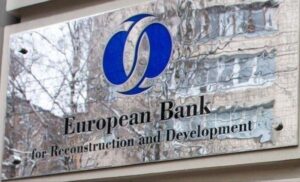
Oil prices are weak Thursday morning after a sharp decline in trading on Wednesday amid talks on the introduction of a ceiling on Russian oil prices.
The price of January Brent futures on London’s ICE Futures Exchange stood at $85.12 a barrel by 7:12 a.m. CST, down $0.29 (0.34%) from the previous session’s closing price. At the close of trading on Wednesday these contracts have fallen by $2.95 (3.3%) to $85.41 per barrel.
The price of WTI futures for January at electronic trades of the New York Mercantile Exchange (NYMEX) makes $77.73 per barrel by that time, which is $0.21 (0.27%) lower than the final value of the previous session. The contract fell by $3.01 (3.7%) to $77.94 a barrel at the end of last session.
The U.S. and allied countries are planning to agree on a price ceiling on Russian oil of no more than $70 per barrel, The Wall Street Journal earlier reported, citing sources.
It was expected that a decision could be made as early as Wednesday, but EU countries have so far failed to come to a unified position, Bloomberg reported. According to the agency, the European Commission offered a $65 a barrel level, but Poland and the Baltic states found it too high. In turn, countries with a powerful shipping industry – Greece and Malta – do not want prices below $70.
“The higher the price ceiling, the easier it will be for buyers from India and China to get access to transport, insurance and other services from G7 countries,” Mizuho analysts wrote.
Also, market participants assessed the official data on energy stocks in the United States, which pointed to a sharp decline in oil reserves and an increase in petroleum products stocks last week.
Commercial oil inventories in the U.S. last week decreased by 3.69 million barrels, data from the weekly report of the U.S. Department of Energy showed. Experts had expected a decline of 2.61 million barrels.
Meanwhile, marketable gasoline inventories rose by 3.06 million barrels and distillates by 1.72 million barrels. Analysts were expecting the growth of the first indicator by 1.15 million barrels, the second – by 650 thousand barrels.

In China, more than 31 thousand cases of infection with the coronavirus COVID-19 were detected per day, the authorities continue to tighten measures to combat the disease, the Associated Press reported on Thursday.
Over the past 24 hours, 31,444 cases of coronavirus have been detected in the country – the highest number of infections in a day since the virus was discovered in Wuhan at the end of 2019.
In the center of Henan province, the city of Zhengzhou, authorities announced tightening measures to combat the virus. In eight districts of the city, starting Thursday, for five days, people will be able to leave their homes only to buy food or receive medical care. About 6.6 million people live in these areas. The entire city will be tested daily for the virus.
In Beijing, a hospital for patients with COVID-19 opened in the exhibition center. It was also denied access to Peking University of International Studies after a case of the virus was identified there. Some shopping malls and office buildings were closed in the city.
On Monday, the city of Guangzhou imposed a lockdown on the Baiyun District, which has a population of about 3.7 million, and asked residents in parts of Shijiazhuang City not to leave their homes while mass tests for the virus were carried out in the city. About 11 million people live in Shijiazhuang.
China has a “zero tolerance” policy for COVID-19. This means that in order to limit the spread of the virus, measures such as lockdowns and mandatory quarantine for those who have come into contact with infected people are being implemented. At the same time, earlier in November, the country’s authorities announced some easing of measures, in particular, a reduction in the period of self-isolation for those arriving in the country.

Glass container manufacturer PJSC Verallia Ukraine (Zarya village, Rivne region), a subsidiary of French Verallia, received UAH 1.3 billion in revenue in the first nine months of this year, 12% more than in the same period in 2021, according to a quarterly report in the National Commission on Securities and Stock Market (NSCM) disclosure system.
“During the third quarter of 2022, Verallia Ukraine withstood the negative effects of active combat operations in Ukraine, the mobilization of a significant proportion of employees and the loss of a number of customers due to the destruction of production facilities, currency fluctuations and due to quick and prompt actions to reduce costs did not lose its position in the glassware market in Ukraine,” the company pointed out.
According to the report, the gross profit of the company decreased by 2.5 times – to 85.95 million UAH, and operating profit – by 26.6 times, or UAH 139 million – to 5.448 million UAH.
In the first three quarters of 2022, Verallia Ukraine posted a net loss of UAH 91 million, while the company posted a net profit of UAH 99.5 million in the same period last year.
The reason was a significant increase in “other expenses” – up to UAH 106.5 million from UAH 23 million last year.
“Verallia Ukraine” produces glass containers for alcoholic beverages and food products, the company employs about 480 people.
Verallia has 32 glass factories, three decorating plants and eight glass processing centers (glass products) in 11 countries and annually produces 16 billion glass bottles and jars for the supply to 10 thousand companies – from local family producers to the major international brands.

Ukrzaliznytsia continues to move with significant delays 81 trains out of 95.
“Not without difficulty, but the railroad continues to move. As of 9:00 a.m. 95 of our trains with all continue to move. Due to the de-energizing of much of the network, 81 of them have delays of more than an hour,” the company said in a message on its Telegram channel Thursday.
The most significant delays for trains:
– No. 711 Kramatorsk-Kiev (almost three hours);
– No. 749 Kiev-Uzhgorod with a group of cars Kiev-Vienna ( more than 11 hours);
– #17 Kharkov-Uzhgorod (over 11 hours);
– #119 Zaporizhzhya-Lviv (about 11 hours);
– #3 Zaporizhzhya-Uzhgorod (over 10 hours).
“Technically the most difficult delays are Intercity+, whose heating depends on the power grid. We equip with thermal blankets, but still have to carry passengers comfortably and warmly, so today two routes – to Kramatorsk (712) and to Dnipro (732) – were picked up by long-distance trains with autonomous heating systems”, – stressed in “Ukrzaliznytsia”.
About the changes in the schedule, the company informs all international partners in detail – they provide dedicated locomotives to provide connections, will help Ukrainians arriving at their stations.
Hubs with tea, coffee, hot meals from the World Central Kitchen, children’s rooms, recharging and rest areas are deployed at Ukrainian stations.
Passengers who missed their flights due to force majeure are put on the next flight of the same destination with the same ticket.

The European Bank for Reconstruction and Development (EBRD) has approved a financing package under which NPC Ukrenergo will be allocated EUR 372 million to support urgent repair of damage caused by Russian bombing of civil energy infrastructure.
According to the bank’s press release, the company will be provided with a state-guaranteed loan of EUR 300 million, as well as a grant of EUR 72 million from the Netherlands.
In particular, EUR 150 million is provided for the purchase of equipment for emergency recovery work, another EUR 150 million is provided for the support of the capital structure of the NPC. Separately, part of the emergency repair loan will be supplemented by a grant from the Netherlands.
“This will be blended into a single EUR 372 million package to support the immediate transmission infrastructure restoration needs of Ukrenergo,” the EBRD said.
The Bank says that EBRD investments in Ukraine are made with the support of donors and partners. The United States of America, which has contributed $500 million to the EBRD’s Crisis Response Fund and is strongly committed to addressing to the impact of the war on Ukraine, will support up to 50 per cent of the EBRD’s loan with a funded guarantee.
“Urgent repairs on Ukraine’s electricity network is an immediate priority for the EBRD. The Ukrainian people and businesses need continued access to electricity to go through the winter. With this important financing, we will help Ukrenergo perform swift emergency repairs of damaged equipment, high voltage substations and transmission lines. It will ensure the continued provision of vital power transmission services during the heating season for Ukrainian households, businesses and communities,” said EBRD President Odile Renaud-Basso.
“The EBRD condemns in the strongest possible way the unprovoked and unjustified Russia-led war on Ukraine and especially the strikes on civilian infrastructure,” the message reads.

The Ukrainian Grain Association (UGA) increased the forecast for the harvest of grain and oilseeds in Ukraine in 2022 by 4.4% compared to the August forecast, to 67.5 million tonnes from 64.5 million tonnes, according to the UGA website on Wednesday.
This change in forecasts is due to an increase in the area where the crop will be harvested, as well as an improvement in the average yield from 3.57 tonnes/ha to 3.64 tonnes/ha.
According to it, the total export of grain and oilseeds from Ukraine in the 2022/2023 marketing year (MY, July-June) can reach 47.5 million tonnes (in the forecast for August, 31% less – 32.8 million tonnes), provided that marine grain corridors are operational until the end of the marketing year. At the same time, the transitional balances of agricultural products in the country at the beginning of 2022/2023 MY amounted to 26 million tonnes of grain and oilseeds, and by the end of the MY they are estimated at 19.2 million tonnes (in the forecast for August, 37% more – 30.5 million tonnes).
“In general, export of grain and oilseeds in 2022/2023 MY can be expected at the indicated level if the Ukrainian Black Sea ports continue to operate until the end of the season. Exporting grain through Ukrainian ports and ensuring the safety of navigation in the Black Sea is the only way to quickly and efficiently supply Ukrainian grain to countries that are in dire need of it,” the organization said in a statement.
According to UGA forecasts, in 2022, a wheat harvest is expected at the level of 19.3 million tonnes (1.5% more compared to the August forecast); 24 million tonnes of corn (forecast kept); 5.6 million tonnes of barley (3.7% more); 10 million tonnes of sunflower (11% more); 3.6 million tonnes of soybeans (1.6 times more); and 3.15 million tonnes of rapeseed (5% more).
In the November forecast, the association raised its export forecasts compared to August ones – for example, wheat exports in 2022/2023 MY are expected at the level of 13 million tonnes (33% more), corn – 20 million tonnes (a 2-fold increase), barley – 2 million tonnes (forecast is kept), sunflower – 6 million tonnes (forecast is kept), soybean – 3.5 million tonnes (an increase of 2 times), and rapeseed – 2.8 million tonnes (forecast is kept).
“We estimate the preliminary forecast for the harvest of grain and oilseeds for the next 2023 at the level of 53.2 million tonnes, and export at the level of 39.7 million tonnes. Everything will depend on the conditions under which Ukrainian farmers will be able to carry out spring sowing, and subsequently harvest crops,” the UGA said in the statement.